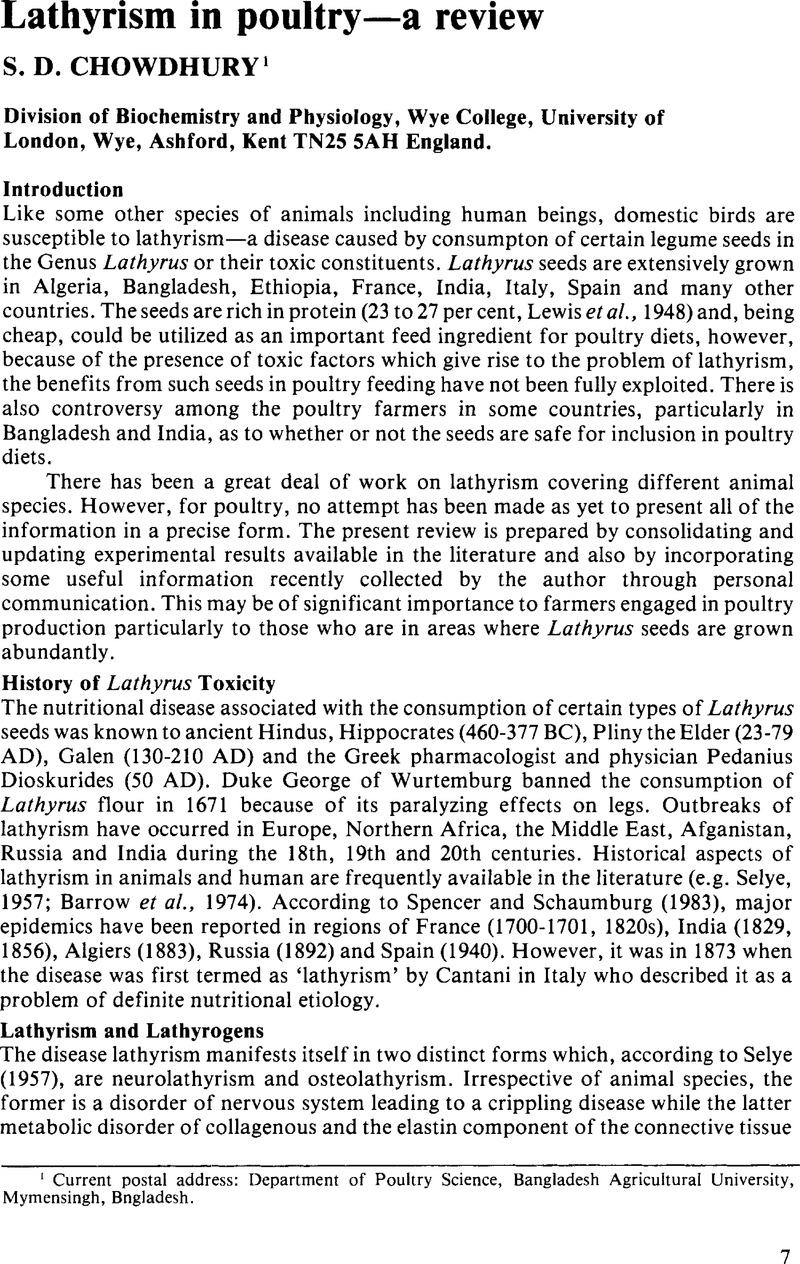Crossref Citations
This article has been cited by the following publications. This list is generated based on data provided by Crossref.
SAMS, A.R.
1990.
Lathyrogen Effects on the Collagen Heat Stability and Tenderness of Spent Fowl Muscle.
Poultry Science,
Vol. 69,
Issue. 3,
p.
477.
Chowdhury, S.D.
1990.
Shell membrane protein system in relation to lathyrogen toxicity and copper deficiency.
World's Poultry Science Journal,
Vol. 46,
Issue. 2,
p.
153.
Chowdhury, S. D.
and
Davis, R. H.
1995.
Influence of dietary osteolathyrogens on the ultrastructure of shell and membranes of eggs from laying hens.
British Poultry Science,
Vol. 36,
Issue. 4,
p.
575.
Wang, Xiaofang
Warkentin, Thomas D.
Briggs, Colin J.
Oomah, B. Dave
Campbell, Clayton G.
and
Woods, Sheila
1998.
Trypsin Inhibitor Activity in Field Pea (Pisum sativum L.) and Grass Pea (Lathyrus sativus L.).
Journal of Agricultural and Food Chemistry,
Vol. 46,
Issue. 7,
p.
2620.
Rao, S. C.
Northup, B. K.
and
Mayeux, H. S.
2005.
Candidate Cool‐Season Legumes for Filling Forage Deficit Periods in the Southern Great Plains.
Crop Science,
Vol. 45,
Issue. 5,
p.
2068.
Rao, Srinivas C.
and
Northup, Brian K.
2008.
Planting Date Affects Production and Quality of Grass Pea Forage.
Crop Science,
Vol. 48,
Issue. 4,
p.
1629.
Rao, Srinivas C.
and
Northup, Brian K.
2011.
Growth and Nutritive Value of Grass Pea in Oklahoma.
Agronomy Journal,
Vol. 103,
Issue. 6,
p.
1692.



